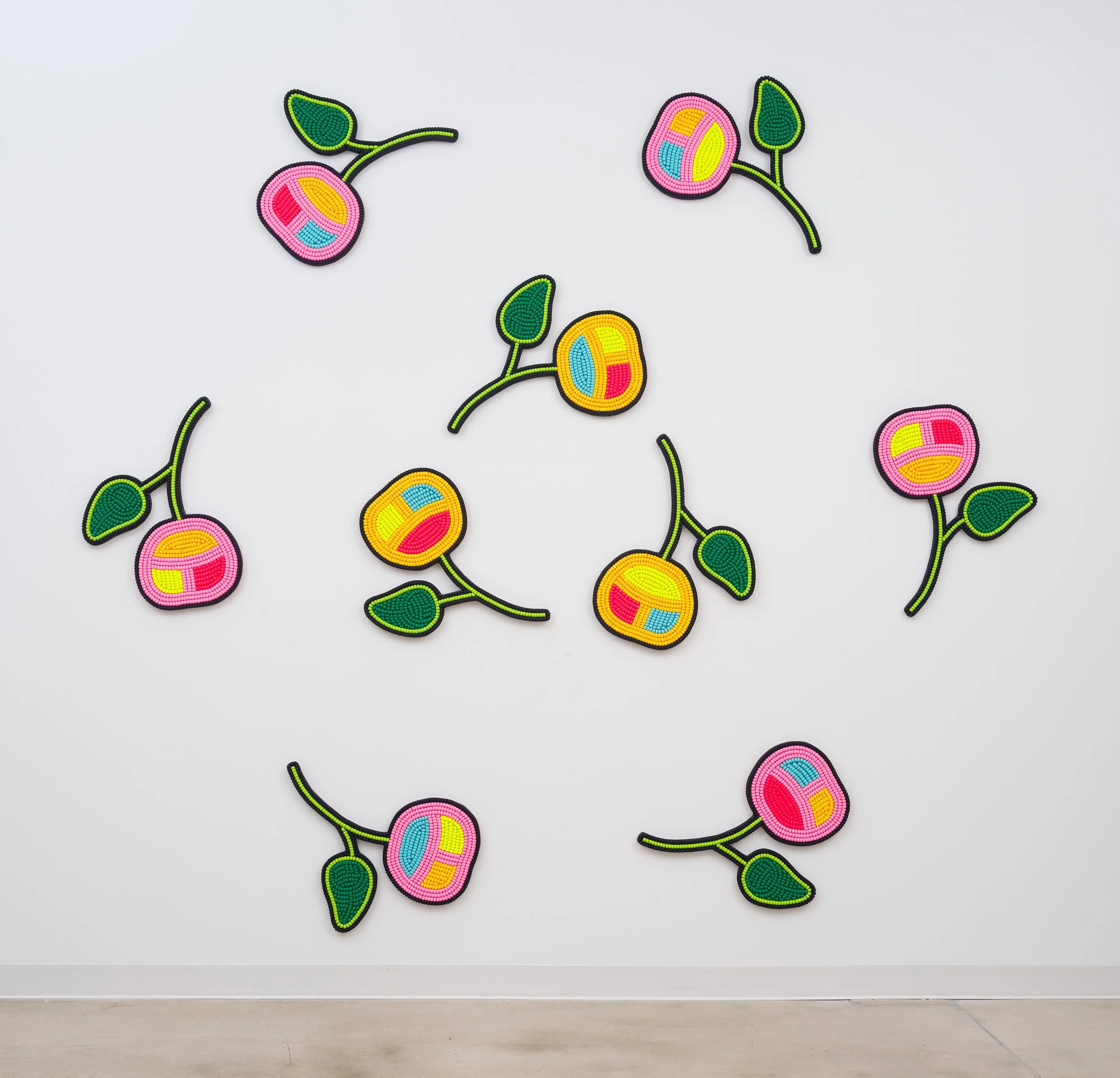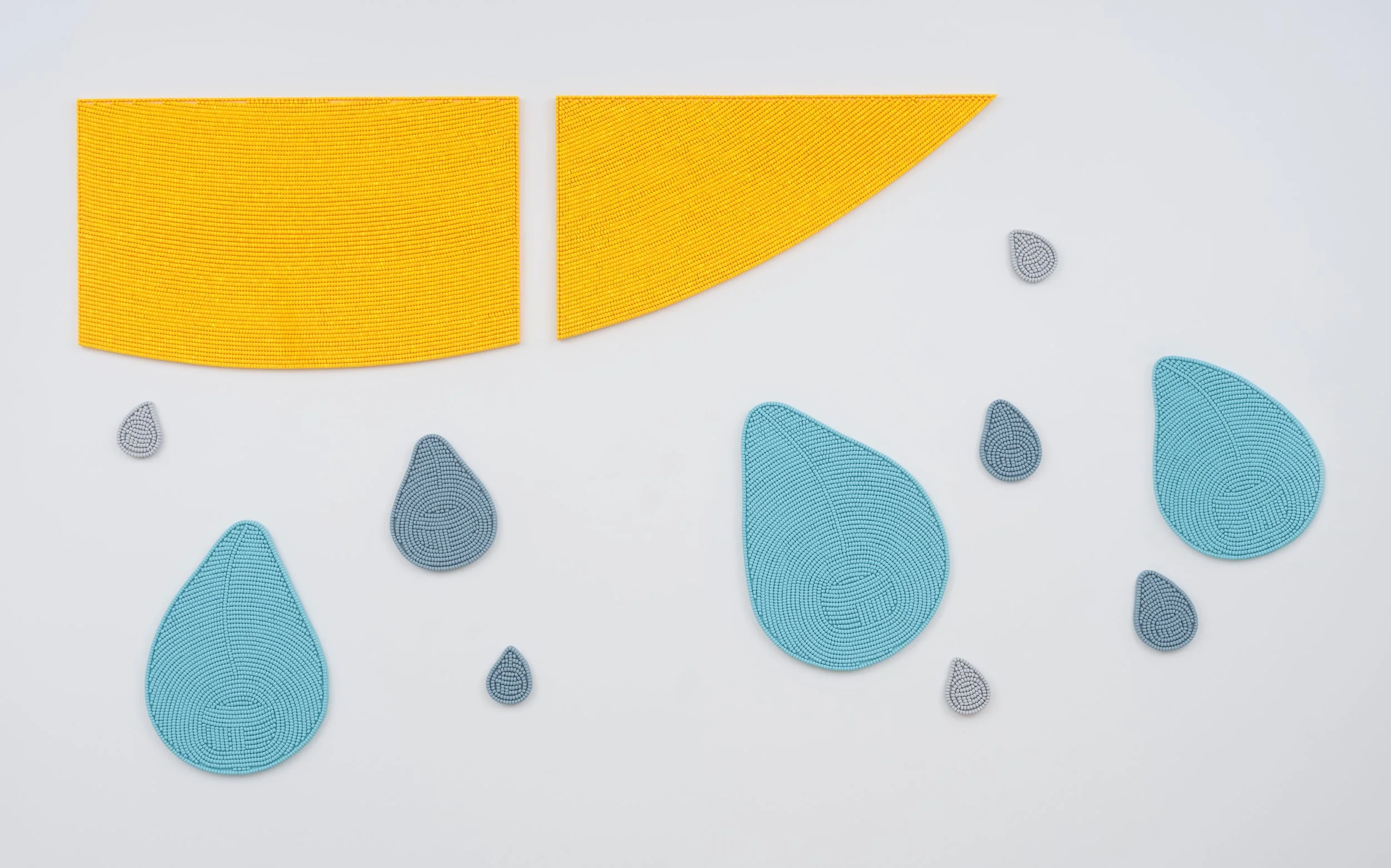In Conversation with Renée Condo
Courtesy of Renée Condo
Renée Condo (b. 1979, Gesgapegiag, QC; lives and works in Tiohtià:ke, Montréal, QC) holds a BFA in Studio Arts and an MFA in Sculpture from Concordia University. Condo’s solo exhibitions include One who shatters particles, one who smells flowers, Blouin Division, Montreal, QC (2025); Shifting Perspectives, Warren G. Flowers Gallery, Montreal, QC (2023); Sisip-Sipu, Knowing Differently, Contemporary Native Art Biennial (BACA), Galerie Laroche/Joncas, Montreal, Que (2022); Heart Knowledge – Pemitgl, Galerie Laroche/Joncas, Montreal, QC (2021). Her work has been included in group exhibitions including a duo exhibition, A Quiet Truth, at Night Gallery, Los Angeles, CA (2024); Abtrus, Galerie Laroche/Joncas, Montreal, QC (2021); Honoring Kinship, BACA (Contemporary Native Art Biennial), Art Mûr, Montreal, QC (2020) among others. As well as various art fairs including Dallas Art Fair, Galerie Blouin Division, Dallas, TX (2025); Art Basel Miami Beach, Gavlak Gallery, Miami, FL (2024); The Armory Show, Galerie Blouin Division, New York, NY (2023); Art Toronto, Toronto, ONT (2021); Miami Untitled, Miami, FL (2024); Plural, Galerie Blouin Division, Montreal, QC (2025, 2024); Artgenéve, Geneva, Switzerland. Condo’s work can also be found in numerous public and private collections including Canada Goose, Montreal, QC and Las Vegas, NV; Citizens Bank, Palm Beach, FL; Google, Toronto, ON; LVMH Moët Hennessy Louis Vuitton, Paris, France; McCarthy Tétrault, Toronto, ON; the Montreal Museum of Fine Arts, QC; RBC Bank, Toronto, ON; Scotia Bank, Toronto, ON; Telus, Toronto, ON; and TD Bank, Toronto, ON. Including public artworks in Laval and Gesgapegiag, QC.
I had the pleasure of asking Renée how her work is deeply rooted in a Mi’gmaq worldview and how it invites the audience in, her approach to making her exhibitions not only an extension of her artistic statement, but also a form of personal engagement, and so much more.
UZOMAH: You are currently preparing for a major installation at the Museum of Fine Arts, Montreal, which will evolve into your debut exhibition with GAVLAK in Palm Beach. Can you tell us more about this new body of work? What are some of the new concepts you are tackling in these two exhibitions?
RENÉE: My practice often explores the relationship of part and whole—how each element belongs to something larger, while the larger also resides within each part. When I was invited to create the scenography for the Montreal Museum of Fine Arts fundraising Gala—elements of which will later reappear as individual works in my upcoming solo with GAVLAK— I felt that gesture echoed the concept beautifully.
For these two upcoming exhibitions, I am turning to the Mi’gmaq Sky World. Here I explore cyclical time, creation as continuous becoming, the presence of ancestors and spirit, and the idea that different realms are distinct but not entirely separate—connected through portals and thresholds that invite reflection on continuity and transformation.
U: As a contemporary visual artist, how do you see art as a tool to address sociopolitical problems—particularly within the Native American community?
R: Art can address socio-political problems by creating visibility and dialogue, influencing decision-makers and supporting communities from within. Visibility matters because our stories and perspectives have so often been excluded or misrepresented, and art can place them in spaces where they are seen, acknowledged, and considered. Dialogue matters because art sparks conversations that might not otherwise take place—across cultures, generations, and positions of authority. In my own work, I see this same potential: art as a space where reflection and connection can grow side by side.
U: Your work is deeply rooted in a Mi’gmaq worldview, with its emphasis on connectedness and interdependence. In what ways does your art invite audiences to engage with these values and with Mi’gmaq culture?
R: People who encounter my work often speak about their experience of it—how it makes them feel, how they sense its presence, how they perceive its energy. For me, this is deeply validating. Mi’gmaq law is based on heart knowledge, the understanding that how we feel about something is more important than how we think about it. Interestingly, research now suggests that we have between 22 and 33 senses in our bodies, far beyond the five we usually acknowledge. For me, this affirms the deep wisdom of prioritizing feeling—an approach that engages our whole selves.
With this understanding, I am very aware of my energetic state when handling my materials. My intention is to infuse the work with care and love, with the hope that this can be felt by the viewer. That initial interaction is important. If, from there, a person is then inspired to learn more about the additional concepts behind the work, that becomes an added gift.
Renée Condo Miawe'g (a), 2025 wood panel, wood beads, acrylic paint, resin 72 x 48 in (each) Courtesy of Renée Condo
U: What do you hope audiences take away from your work? Is there a particular message within your artistic statement that you most want to convey?
R: What I most hope people take away is a feeling—that sense of vast interconnectedness, of belonging to something greater. I also hope the work helps us question our own ingrained paradigms and creates space for the perspectives of others, opening the possibility of relating differently to one another and to the world around us.
Renée Condo Elitg, 2025 Wood beads, wood panel, resin, acrylic paint 70.87 x 70.87 x 0.79 in 180 x 180 x 2 cm Courtesy of Renée Condo
U: Your past exhibition One Who Shatters Particles, One Who Smells Flowers at Blouin Division reflects your ongoing engagement with quantum physics and cosmology. How do these themes continue to shape your exhibitions more broadly?
R: In searching for answers about how we are all connected—beyond my own feelings and intuitions—I first turned to quantum physics. Ideas like wave-particle duality and entanglement felt familiar, almost like memory. I recognized that these principles were also integral to a Mi’gmaq worldview. I was not raised in an explicit Mi’gmaq consciousness due to historical disruptions, so that realization came later in life. Today, as my connection to Mi’gmaq worldview and cosmology deepens, I find myself turning less to quantum physics. In these two upcoming exhibitions, I use quantum physics only as a point of comparison, choosing instead to highlight a Mi’gmaq perspective on space and time.
U: How do you approach making your exhibitions not only an extension of your artistic statement, but also a form of personal engagement?
R: Every exhibition is personal. Mi’gmaq values guide how I live and work. From the beautiful folks who work in my studio when needed, to those I collaborate with in galleries and other art spaces, to collectors, or anyone who may encounter the work, to the attention I put into working with my materials as the artwork takes shape—all relationships are approached with mindfulness, reciprocity, and with the best interest of all parties in mind.
Renée Condo Gjinisgam (c), 2025 Wood beads, wood panel, resin, acrylic paint 44.88 x 212.6 x 0.79 in 114 x 540 x 2 cm Courtesy of Renée Condo
U: What do you think makes a work of art truly memorable? Is there a piece by another artist that stands out to you as embodying those qualities?
R: For me, I’m often drawn to a mix of humour and the cerebral, with an aesthetic leaning toward the minimal. One piece that has always stayed with me is John Baldessari’s The Pencil Story. It’s smart, funny, simple, and complex. For similar reasons, I also love Shelley Niro’s The Rebel. I enjoy the playfulness of both works, and how something deceptively simple can open into something much larger—whether through philosophical questioning or cultural critique. That balance of simplicity and depth, humour and consequence, is what I connect with most.
For more information about Renée’s artwork, she can be found on Instagram here. The magazine did a feature on Renée’s latest exhibition, which can be found here.



